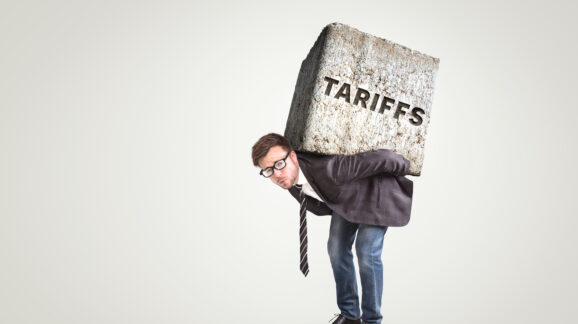New tariffs for pharmaceuticals, furniture, and trucks

Photo Credit: Getty
On the night of September 25, after markets closed, the Trump administration announced on social media that a new bevy of tariffs will take effect on October 1. They include:
- 100 percent on branded pharmaceuticals;
- 50 percent on kitchen cabinets and bathroom vanities;
- 30 percent on upholstered furniture; and
- 25 percent on heavy trucks.
In addition to the short notice, the new tariffs come with exemptions and complications, and few details explaining them.
Drugs from companies that are building factories in the US will be exempt from the tariffs, but it isn’t entirely clear what that means. President Trump’s social media post refers to projects that have broken ground. Since permits and environmental reviews can take several years, will Trump change his mind to include projects that are in progress, but stuck in regulatory limbo?
Earlier this year, Trump announced several trade deals that cap tariff rates well below 100 percent. Does this announcement alter those deals, since none of them are finalized?
Less than a year into his term, 64 percent of Americans oppose Trump’s tariffs. Pharmaceutical tariffs will raise people’s health care costs, co-pays, and insurance premiums. This is not a recipe for popularity. Tariff-related price hikes might also mean that some people will have to do without needed medications.
The furniture tariffs will also make home improvements needlessly more expensive. Rising health care and housing prices are already frustrating voters. The president assures us that these tariffs are being imposed for national security reasons, but many people will struggle to see the relationship between bathroom vanities and the defense of the United States from foreign aggression.
There are other questions that do not yet have answers. Last week, Trump announced a 15 percent tariff on European trucks, retroactive to August 1. Does last night’s 25 percent heavy truck tariff affect European heavy trucks? For affected vehicles, that could make two tariff changes in one week.
A strategic note: Trump’s Liberation Day tariffs and his related trade deals rely on IEEPA, the International Emergency Economic Powers Act of 1977. The Supreme Court will soon hear a challenge to that case, and a verdict could come before the end of the year.
These latest tariffs cite a different statute. This is a tell. It means that the administration expects to lose the IEEPA Supreme Court case.
Instead, they cite Section 232 of the Trade Expansion Act of 1962, which lets the president raise tariffs by invoking national security. Roughly a third of US imports now face a Section 232 tariff, including the steel and aluminum tariffs from Trump’s first term that are still in effect, and were increased to 50 percent this term.
An earlier legal challenge to these Section 232 national security tariffs failed, since courts tend to give presidents a lot of leeway on national security matters. The fact that Trump invoked the War of 1812 to justify steel tariffs against Canada was apparently not enough to convince courts that Trump may have been overplaying his hand.
However, that case was decided before the major questions and non-delegation doctrines came into play. A new challenge on those grounds may fare better.
Until then, look for future Trump tariffs to avoid IEEPA and instead cite Section 232 and other statutes such as Sections 122, 201, and 301 of the Trade Act of 1974, and Section 338 of the Smoot-Hawley tariff bill from 1930. For more on these, see CEI’s Agenda for Congress chapter on trade.
These provisions are slower than the president likes. They require waiting periods, studies, reviews, and in some cases, time limits on tariffs. But they will remain in effect if the Supreme Court declares Trump’s IEEPA tariffs unconstitutional.
No matter what happens, tariff increases will continue, likely for the rest of Trump’s term. Neither relief nor stability are yet in sight.